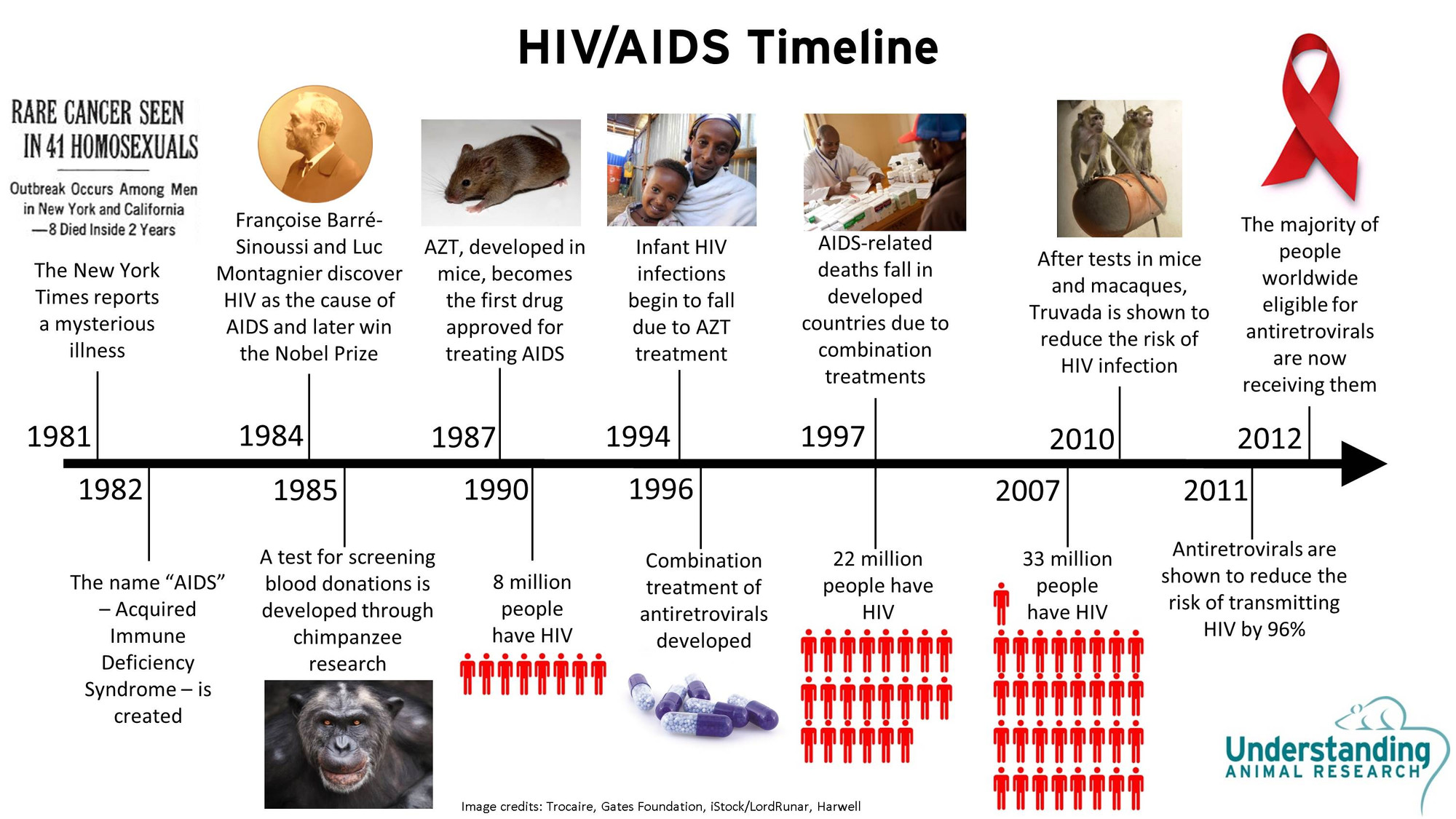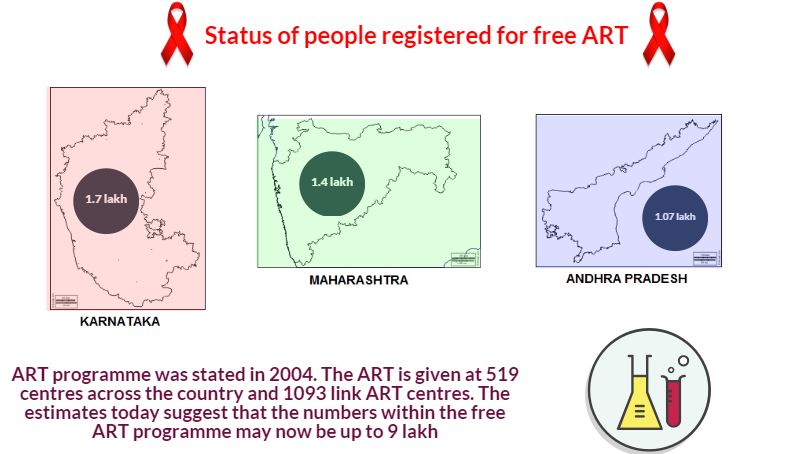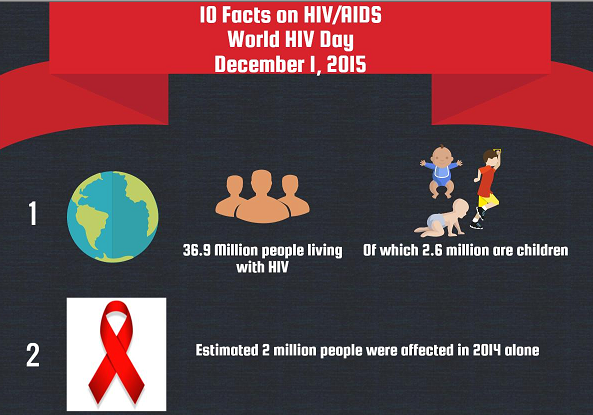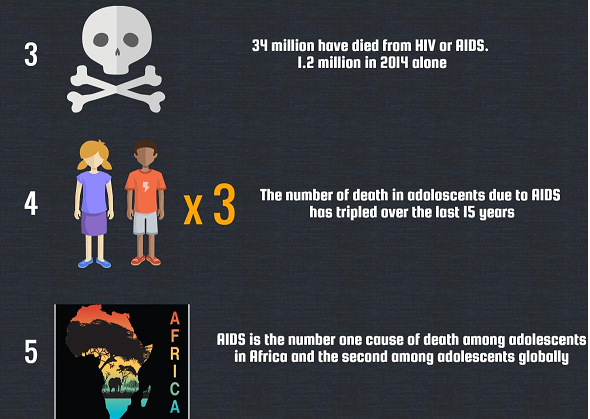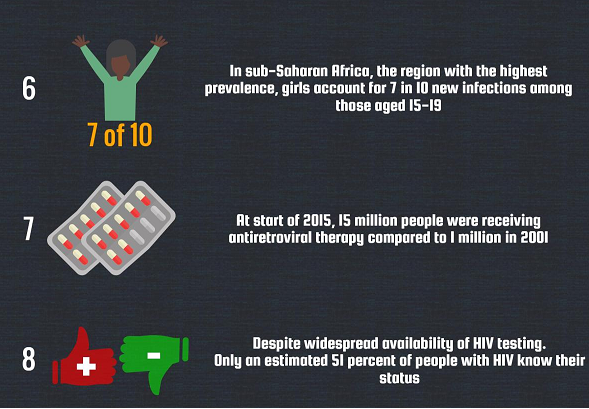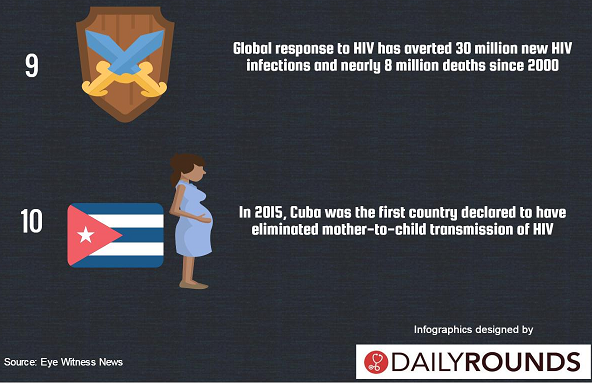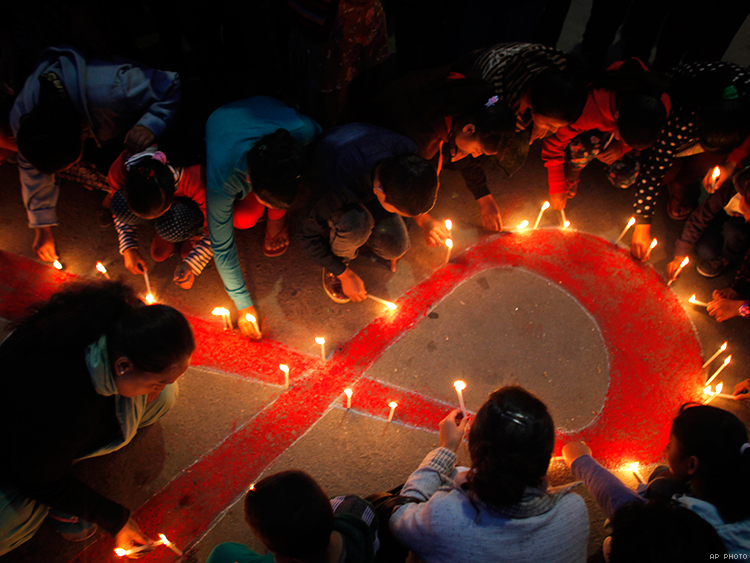
World Aids Day 2015: Where does India and the rest of the world stand today?
On World AIDS Day – Dec 1, 2015, here’s understanding how the HIV/AIDS virus is affecting India and the rest of the world.
History of AIDS
Scientists identified a type of chimpanzee in West Africa as the source of HIV infection in humans. They believe that the chimpanzee version of the immunodeficiency virus (called simian immunodeficiency virus, or SIV) most likely was transmitted to humans and mutated into HIV when humans hunted these chimpanzees for meat and came into contact with their infected blood.
Studies show that HIV may have jumped from apes to humans as far back as the late 1800s. Over decades, the virus slowly spread across Africa and later into other parts of the world. We know that the virus has existed in the United States since at least the mid- to late 1970s. A brief timeline of HIV/AIDS shows us the history –
The India Story
2015 marks 30 years in India’s fight against AIDS. Dr IS Gilada, President, AIDS Society of India says, “This is also the first time that we are witnessing the strongest evidence-based WHO HIV guidelines to provide ART treatment to all testing positive for HIV, regardless of CD4 counts”
However, according to Dr Sanjay Pujari, an AIDS expert and consulting physician who has been treating HIV positive people for over 20 years, the economics of testing everybody will have to be considered by the governments concerned. “While ending AIDS by 2030 is the new mantra, it is more important for the government to sustain prevention programmes and prioritise high risk groups,” Pujari said.
According to the WHO, people at a ‘substantial’ risk of HIV should be offered preventive antiretroviral treatment (ART). The new guideline stresses that in order to effectively implement the recommendations, countries will need to ensure that testing and treatment of HIV infection are readily available and those undergoing treatment are supported to adhere to recommended regimens and retained in care. According to UNAIDS estimates, expanding ART to all people living with HIV and expanding prevention choices can help avert 21 million AIDS-related deaths and 28 million new infections by 2030.
HIV positive status means a person who has the Human Immunodeficiency Virus in his/her bloodstream but the person’s immunity is not compromised enough to make him/her a full blown case. The distinction was done away with because both groups of people require anti-retroviral therapy depending on the extent to which their immunity has been compromised. ART is therapy administered by using a cocktail of anti-retroviral drugs (HIV is a retro or RNA virus). The standard treatment currently used a mixture of upto three drugs to contain the infection
Click for: WHO ART Guidlines
While India can look back at its AIDS control programme with some satisfaction, having decereased a 57% decrease in new infections in the past decade. The percentage shouldn’t be taken too positively because India is densely populated and the recent winding up of the National AIDS Control Organisation (NACO) as a separate body comes as as shock. The AIDS control department stays attached to the health ministry and has seen funds reduced by international donor agencies.
The other alarming fact is the numbers of free ART being conducted across the country. In July 2014, the health ministry stated that 7.77 lak PLHIVs in India were registered for free ART. Here are some of the other figures:
Rest of the World
Looking at the condition across the world we can find –
The Future
“India is the biggest success story in the world when it comes to AIDS control. We are the only country that has decreased new incidence by 57%. Just humane intreventions and home grown strategies did it for us in a society that is so closed that we were asked to air condom ads after 11 pm when children are asleep. But now I see the entire programme being destroyed, funds slashed, NACO wound up. I do not know what the future holds,” says former health secretary Sujatha Rao who had been one of the key people in getting the AIDS control programme up and working.
AIDS will remain an enormous global challenge. Even with a robust and much stronger effort to prevent new infections and deliver effective therapies, the disease will undoubtedly remain a major cause of death worldwide. In Southern Africa, AIDS will continue to pose an existential threat to national economies, agricultural sectors, and both urban and rural communities.Yet much about the future of AIDS remains uncertain. In large measure, the pandemic’s severity in 2031 will depend on choices to be made in the next few years.
If efforts to tackle AIDS become smarter, more focused, and more community centered, tens of millions of lives can be saved over the next generation. If actions to address AIDS instead remain static or weaken over time, the result will be millions of preventable new infections and AIDS will claim many more millions of lives.
Source: Indian Express, Pearson Education -Financial Times
Image Credits: AP Photo/Niranjan Shrestha, understandinganimalresearch.org.uk
